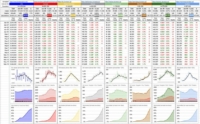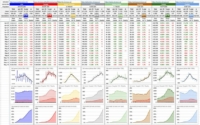March 30, 2021
Here are a couple of dictionary definitions:
Mitigate (v): to make less severe, serious or painful
Alleviate (v): to make (suffering, deficiency, or a problem) less severe
Almost the same definition, but there’s an important subtle difference that’s crept into how those words are used… with one, you’re taking corrective action to correct a problem; with the other, you’re taking steps before the problem happens in hope it never becomes one.
A distant example was when I got my first car, and my dad telling me… no matter what, change the oil. Every 3,000km or every 6 months, whatever comes first… change the oil. Even if you don’t want to worry about spark plugs and fan belts and brake pads and everything else… change the oil. Mitigating that risk cost me $23 at Mr. Lube every 6 months. Alleviating the problem of a seized engine that ran dry of oil, or gummed up the motor because it was old and dirty… would’ve cost far more. I put close to 300,000km on that car and never had a serious issue with it. It was a rusty pile of junk when I sold it for $400… $200 cash, $200 in cheques that ultimately bounced… but the oil was pristine.
A far-more recent example… as told to me by my friend Henry, who designs boats… including tug boats, for the local company, Robert Allan Naval Architects. Six RANA tugboats were instrumental in freeing the Ever Given from the clutches of the Suez Canal yesterday. Not too long ago, RANA provided the Suez Canal a proposal advocating for escort tugs for all ships transiting the canal. This would be mitigation, and it would have a cost… but I suspect that cost would’ve turned out to be a lot less than the week-long alleviation that was necessary.
Getting sick with C19 requires alleviation… and I have no doubt for people knocked down by it, they wonder if they could’ve mitigated the risk of catching it. If they were wearing masks and distancing and not attending crowded events and they still caught it, that’s most unfortunate. It’s also possible that my car develops an oil leak and the engine light fails and one day I’m driving around… and the engine melts on me. It’s also possible that high winds or whatever it was that caused the Ever Given to ground itself might have been so strong that tugboats would’ve been helpless.
Sure… you can mitigate all you want, but it’s inherent in the definition of the word. It makes things better, not perfect. A vaccine that’s 95% effective says, in the same breath, that for 1 in 20 people, it won’t help in preventing infection. Unbelievably, that’s the reason some people give for not wanting the vaccine: “If I get the vaccine, I can still get sick… so why bother?”. There are actually two answers to that question. One is that a 19 out of 20 chance of not getting sick makes it worthwhile. And the other is that, with the vaccine, even if you do get sick, it won’t be so bad. It’ll just be a mild case.
If you don’t like the math of that, then I would ask you a simple question: Why aren’t you buying lottery tickets every week, and if you are, why aren’t you already filthy rich? After all, if you buy a ticket, either you win or you don’t. What’s the difference?
Eastern medicine has always been about mitigating; some Chinese doctors don’t charge you when you’re sick… they’re there for fix you. But they do charge you when you’re healthy, because their job is to keep you from getting sick in the first place. That’s mitigation, versus the western method of alleviation of going to the doctor when you’re already sick. Mitigation is the answer to a question we used to ask… why is that perfectly-healthy Asian person walking around with a mask?
We all have the knowledge and tools to mitigate the risk of C19… for ourselves and for others. Many of us do whatever we can, and it certainly helps… but it’s not full-proof. But it’s still worth doing, because, having spoken to people who’ve survived this thing, the cost of alleviation (which in some cases goes on forever) is far higher… and I don’t mean monetarily. That’s the least of it.
March 29, 2021
To be honest, I don’t really like surprises. Don’t ever throw me a surprise party.
But today’s surprise update at 1pm from the PHO wasn’t really a surprise… not after last week, and what things looked like heading into the weekend. Add to that the end of Spring Break, and there are enough worrisome moving parts that it all needs a serious look.
That serious look is providing us with new restrictions, much to the delight of some, despair of others. Either way, necessary… and possibly more than people can appreciate. In the U.S., the head of the CDC is warning of “impending doom”. It’s not that bad around here; at least, not yet… and there’s no reason it should get to that point. And it won’t, if enough people actually listen to and respect the rules. Many people do. Many people don’t. And many people are somewhere in between, and like a close election, they’re the ones who might make all the difference.
The numbers were trending towards exponential growth, and they still might… Spring Break ended today, it’s a week or more till the results of that shows up… and a week after that for hospitalizations, or worse.
It’s concerning enough to implement a “circuit breaker” – the same thing we’ve been hearing since Day 1: Break those chains of transmission. Case counts are up, test-positivity rates are way up, and the ever-growing presence of the more contagious variants… all of it is concerning.
Accordingly, for three weeks – till April 19th, starting at midnight tonight – a series of restrictions; some we’ve seen and some are new. Here are the highlights:
– All students grade 4 and up will wear masks
– All indoor dining in restaurants and pubs, suspended. Outdoor dining and take-out is ok.
– Indoor fitness classes are suspended. One on one training is ok, but that’s it
– Indoor religious services suspended
– Whistler/Blackcomb closed
All of that on top of what’s already in place… don’t socialize indoors, don’t socialize outside of your group of 10. Essential travel only. Wear a mask. If you’re not sure, err on the side of caution. If you’re not feeling well, stay away from other people and do not go to work or school, period.
This erring on the side of caution, some would argue, is excessive. I will simply go back to what I was saying around this time a year ago; we can’t afford to be wrong, especially now, with a clear finish line in sight. “Short term pain for long term gain” has never been so relevant. It’s exactly where we’re at.
The erring on the side of caution has also dragged the AstraZeneca vaccine back into the discussion, because now, the number of younger people in Europe who’ve developed blood clots is up to 30. This is out of five million people… so, one in 166,667… which is 0.0006%. The typical random rate for getting a blood clot in any given year for any given person in Canada or the U.S. is around one in 1,000… 0.1%… a far higher number. I’m still going to put it out there; in the future, the AZ vaccine will be used to mitigate the risk of blood clots… because – and someone correct me if I’m wrong – my numbers suggest a far lower prevalence of blood clots among those who’ve had the AZ vaccine. Certainly not the other way around. Maybe I’m missing something. Maybe there’s more to the story.
For the moment (and I’m guessing it won’t last long), the AZ vaccine will be used in B.C. only for those aged 55 and over. I suspect that’ll have changed by next week.
Either way, it doesn’t make a big difference… we’re being told there’s enough Pfizer and Moderna showing up that there will be enough for one dose for all eligible adults by the end of June. Let’s hope it works out… now *that* would be a nice surprise.
March 28, 2021
The discussion of how medicine and politics got so wrapped up will carry on for decades. For the moment, though, it raises practical issues. Like, 49% of Republican men refuse to get vaccinated. What’s the implication for society when large demographics think similarly? It’s going to create some significant problems for those cultures. On the flipside, societies where vaccinations are welcomed are facing different issues.
Israel, who’s led the charge with vaccinations, no doubt had been thinking ahead to what a post-vaccine pre-end-of-pandemic future might look like, and their answer, with which I completely agree, is a vaccine passport. They have what’s called a Green Pass, basically a QR code you can carry around, printed out or on your phone. The pass is valid for 6 months after your second shot has kicked in, and it gives you all the freedom you’d expect to have when you yourself are not a danger to those around you. Pubs, restaurants, concert venues, sporting events, whatever… they’ll scan your code and in you go. Some restaurants will only allow valid pass holders inside, but everyone else is welcome to sit outside. This makes sense on every level.
We are still unfortunately far from this… close to 60% of Israelis have had at least one dose. Our number is a little under 12%. But I would urge our powers that be to think ahead a bit, and not get caught with our pants down as we have with this vaccine rollout.
Start planning NOW for this infrastructure; it’s not complicated… just a robust, secure back-end that connects to a subset of people’s medical records (specifically, only vaccination info) and plugs it into a user-friendly front end. I have this all so clearly designed in my head… I could whiteboard the whole thing for you in 20 minutes and if you say go, I promise you… it’ll be done in 4 months. If someone had given me that “Go!” 4 months ago, it’d be done already. And it’s not like I’m some genius; this isn’t complicated. I know development teams, both here and in Israel, that would make short work of it. I know some fantastic development teams who’d love to sink their teeth into this. I’d be happy to make the introductions and get this thing rolling on every level.
That being said, I’d be very surprised if this isn’t already well on its way to rollout. It should be. It’d better be. At the beginning of this pandemic, there were plenty of unknowns, and tough decisions were made, mitigating risk/reward with people’s livelihoods and/or a virus that could kill them. I am not envious of the people who had to make those touch choices, and I’ve been impressed that they’ve been more right that wrong.
But all that being said, I will unleash a lot of anger if suddenly one day, when 49% of us are vaccinated and itching to get back to the real world… we’re told that a vaccine passport is in the works and should be ready in a few months. I will seriously lose it. Unknowns are one thing, but this is all known. Every single little aspect of it can be predicted, planned and developed. There is NO excuse. ZERO… for not having a fully-functioning system in place the moment we need it. In fact, there’s no reason it couldn’t already be starting a slow rollout… getting the back-end to businesses who can start planning around it, and getting the App into all our hands so that 2 minutes after we’re jabbed, the entire infrastructure knows all about it. We are all carrying around devices that serve both as the passport and the scanner. This is not complicated… and I don’t really care who does it; I’m happy to help if it’s needed… but, seriously, I hope someone is laughing at the thought… because they’ve already been at it since November.
March 27, 2021
We hear a lot about “They”. Who are “They”? Or, maybe… better yet, what is “They”? … as in,
“They’re trying to ruin our lives”
“They’re trying to control us”
“They’re trying to get rid of us”
Different versions of the same old idea that “They” imposed C19 upon us so “They” could get us all used to being controlled so that eventually we’re all just some drone army of zombies doing whatever “They” want so they can make lots of money and then… whatever.
If there is a controlling “They”, there are actually 200+ versions around the world, all of them getting some parts of this right and some parts of it wrong. You’ll have a hard time convincing me that there’s a “They” above that, because that “They” would be suffering greatly these days.
But on the note of enslaving everyone, some 3,500 years ago, there *was* a “They”. It was the Egyptians, and it was the Israelites who were enslaved, and it took Moses to appeal to the Pharaoh to let his people go. If you’re not familiar with the story, I hear you can read all about it in some Chapter of some Book. But if you’re not into reading The Bible, and whatever is found in the book of Exodus doesn’t excite you, do what you did in high school: watch the movie. There are various to choose from, but here are the top 3:
1. The Ten Commandments – a three-hour epic of biblical proportions starring Charlton Heston. The movie is 65 years old so the CGI might not be what you’re used to, but it’s good… and if you’ve ever taken the Universal Tour and seen the waters part so that your tour buggy could drive through (3,500 years ago, it was the Israelites crossing the Red Sea), you’ll be able to relate.
2. The Prince of Egypt – a more accessible animated version that tells some, but not all, of the story… DreamWorks, award-winning music, etc.
3. When Do We Eat? – this is a shameless plug, because I produced this fantastic little movie… but if you want an R-rated mix of religious observance with a whole bunch of craziness, this is the one for you. If you’re Jewish and haven’t seen this already… why the hell not? For all the older people, Quincy (Jack Klugman) is in it! For all the younger people, Zoey 101/iCarly (Victoria Justice) is briefly in it. Even Oscar from “The Office” is in it! Whether you’ve seen it or not, tonight is the perfect time to watch it! Conveniently available on Amazon Prime.
Indeed, tonight… because tonight is the first night of Passover, where Jews from all over the world will be sitting down to a ceremonial meal called a Seder, something they’ve been doing for thousands of years. Because when you’ve been enslaved for 400 years and the bad guy finally says, “OK, get out of here” – it’s something to celebrate.
Last year, Passover happened very close to the start of the pandemic. It was in fact the reason I signed up for a Pro Zoom account… because nobody is getting through the ceremonial part of any Seder in under 40 minutes (“When Do We Eat?!?!”). That’s how we got the friends and family together last year, and this is how we’re doing it this year. And, the old silver lining to this big cloud… you can fit a lot more people around a Zoom Seder table than you can in real life.
To some extent, we’ve all be enslaved by C19. It hasn’t been 400 years, but it’s sure felt that way some days. Who or what is the Moses of the day, leading us out of it? Some specific people? Some policies? Science? Vaccines? Discuss amongst yourselves.
In the meantime, before watching WDWE for the 15th year in a row after our Seder tonight, we’ll say the traditional last line of the ceremony… “Next Year in Jerusalem!” …but I’m happy to be a lot less ambitious. How about, just, “Next Year in Person!”
I’d love that. So would They.
March 26, 2021
The good news with numbers is brief. Yesterday, B.C.’s vaccination rate went from nine point something to ten point something percent. Today, so did Alberta and Ontario… all of which allowed me to change the percentage to one decimal place instead of two. That’s one small step for a decimal point; one giant leap for significant figures as it pertains to reaching the end of this thing. I look forward to Manitoba joining the club soon.
And that concludes the numbers-related good news.
Today, B.C. had over 900 new cases… for the first time since November. What’s also bad is that the new-case growth rate was over 1%… not a particularly good direction for the trend to be heading.
Here are the weekly new-case averages per week, starting 6 weeks ago:
433, 441, 480, 559, 537, 560, 699. There was a nice dip a few weeks ago… right around the time Dr. Henry was calling it a turning point; it’s up to us, yadda yadda… so, how’d we do? There you go.
We’re likely to see the new-case numbers crawl over 1,000 in the next few days… so, to be clear, we’re very much in a 3rd wave… the question is, how bad will it get? Nowhere near as bad as it’d be if we didn’t have improving weather and vaccines. But nowhere near as good as it’d be if we didn’t have variants… and if we’d all properly followed those rules we used to be so good at. Half of that we can’t control… but the other half…
Now it’s Spring Break; people are traveling and doing their own thing. This is how we roll, and for the people who’ve simply “had it” with the pandemic, none of this matters. Ask me in two weeks how much it really matters, but as good or bad as it gets, when it comes to reaching the finish line, it’s not that we’re not running towards it as fast as we can… it’s that we keep pushing it our further. It’s a tough race to figure out when the finish line keeps moving, but it’s even more frustrating when we’re the ones moving it.
Stay tuned for Monday’s numbers… and don’t hold your breath for any radical change in restrictions. If anything, we’re presently going the wrong way.
March 25, 2021
On the flipside of the virulent anti-vaxxers comes the crowd who’ll do anything to jump the line and get their shot. Our most famous local exhibit are those two “hotel workers” who flew to that remote village in the Yukon, happily joining the queue with the Indigenous elders of the area. Pathetic, and grossly unethical.
… and, as it turns out, far from uncommon. Given the haphazard rollouts at provincial and state levels, there are plenty of opportunities appearing. It’s come to light that any of us could hop on a plane, fly to an American city… and easily get jabbed. Different places have different requirements, but here’s a good example: Any smoker in Illinois is instantly eligible. People have been lying and getting shots all over the place… and if your ethics allow for it, why not fly to Chicago for $300, walk into a pharmacy, buy a pack of smokes and say, “Hey… while I’m here…”
Were it not for the 3-day, $2,000 mandatory hotel visit on the way back, I suspect this might be a more popular thing to do.
But, you don’t have to go so far… and, this changes daily. And, it’s completely ethical:
In four days, any adult in Ohio will be able to get the vaccine. A couple of days later, anyone in Utah. A few days after that, Michigan and Connecticut. Washington State is a bit behind, but they’ll likely have that in place by May. And that’s for *everyone*.
Eventually, places reach the point where the supply outpaces the demand, and the doors can fly open. Come and get it. And, until things get to that point, still… with a pre-existing eligible condition, just wander into the CVS and walk out vaccinated… as easily as getting a flu shot around here.
The three most common words that you’ll overhear at a racetrack are “Woulda”, “Coulda”, and “Shoulda”; you hear them a lot when the horses cross the finish line and frustrated horseplayers crumple their losing tickets and toss them angrily onto the floor.
“I coulda bet the Daily Double!”
“I shoulda put the 4 in my Trifecta!”
“I woulda bet the 7 if I had more money!”
One day, when this is all over, and the people in charge are trying to figure out why Canada, a first-world nation with every possible resource at its disposal, managed to fall so far behind the eight-ball on their vaccine rollout, these words will heard a lot. They coulda done this, they shoulda done that. No doubt lessons will have been learned… but it’s just as likely that by the time the next pandemic of this sort shows up – which, hopefully, is many many years from now, it’ll all be forgotten. The only lines people will be familiar with jumping will be for the SkyTrain… or for rides at Playland on crowded Labour Day PNE weekends.
Highly recommended, by the way… the rides, the food, the animals, that building full of hucksters shilling Ginsu knives and stuff to magically polish your car… and, while you’re there, check out the horses at Hastings Park. Pick a horse and bet on it… watch it finish fourth… and then, repeat after me – including you, Mr. Trudeau — woulda, coulda, shoulda.
March 24, 2021
On July 12, 2018, an elongated dump truck, entering the Knight Street bridge via an onramp – a little too quickly – rolled over and dumped its contents all over the bridge deck, leading to a closure (in both directions) that lasted hours. Unfortunately, it started leaking diesel as well, which led to hazmat team showing up. Further complications (including the truck driver being trapped – he was fine, but it took a while to extract him) led to this entire episode going on for several hours; no traffic flowing either way.
The cascading effect of that was interesting to see. Knight St. being blocked led to Marine Drive being backed up… beyond the point where alternate routes were accessible. Trying to get out of Vancouver towards Richmond and Surrey is next to impossible from the south end if Oak St. is backed up and Marine Drive is clogged… so people started trying to head east from avenues that were further north… and slowly, 49th, 41st, King Ed… all the way down to Broadway and, eventually, downtown… all clogged. Standstill. For hours.
From an engineering point of view, the Knight St. bridge is a SPF – a Single Point of Failure. When it fails, there is a cascading effect that leads to bigger and bigger problems because everything that depends on it will also fail. It’s what you always try to avoid, but sometimes, it’s inevitable… as is usually the case with bridges. Traffic in Vancouver is at the mercy of our bridges… because we’re on the coast, and because we have rivers and inlets. The trade-off of not having 9 bridges spanning every arm of the Fraser River is that once in a decade or two, this will happen… and there’s really nothing to fix, and there’s really nothing to mitigate. Once in a long while, an accident will close that bridge and chaos will ensue, and we will deal with it. The previous time, you might recall, back in 2000… a boat carrying a crane miscalculated something, and 15cm of the top of the crane hit the bridge and ruptured the water and gas lines. Good times.
Those are SPFs at a municipal level. What do SPFs at a global level look like? The Panama Canal is an obvious one. Plug it up for a significant period of time, and global chaos will ensue.
Close behind that is the Suez Canal, where more than 10% of international maritime traffic travels… and where, yesterday, a 200,000 ton/1,300 foot container ship managed to ground itself diagonally and block the entire thing. An army of tugboats is there as we speak, furiously trying to un-wedge it… because there is an ever-growing traffic jam of oil tankers and other ships… on both sides.
Back to the local level… a vaccine rollout is a complicated endeavour, and nobody wants to be the SPF. Nobody wants to be that weak link. We got a hint of it recently, and we will label that SPF “Telus”. You might have loads of vaccine and nurses and tents and parking lots and clinics and doctors and syringes and all the rest of it, but the entire infrastructure is at the mercy of its weakest links; its SPFs. That’s why, properly done, you have not just phone banks, but every other version of communication available as well for booking appointments.
I don’t need to harp on this, because it’s already been discussed at length and solutions are being implemented and all the fingers have been pointed in the appropriate directions.
But it’s worth mentioning because, thanks to a very different sort of SPF, specifically the mishandling of the AstraZeneca messaging, we will be getting a lot more vaccine sooner than we’d expected. And I would love it if it were able to flow, unimpeded, into all of the arms that are eagerly awaiting it.
… because the only SPF I really want to be worrying about is the rating of the sunscreen I’ll be putting on, enjoying a Covid-free late summer on a crowded Kits beach, lying in the sand, staring at the blue sky, swimming in the ocean and watching all those big container ships transiting in and out of the harbour… hopefully not running into anything.
March 23, 2021
It’s a good thing AstraZeneca makes a good vaccine… and perhaps that’s where all their money goes… because their PR/marketing/outreach/spin-control department certainly isn’t as world-class.
First, the whole blood-clot non-issue that spun out of control. It’s since spun back, but not before permanently eroding confidence in that vaccine among many people; irreparable damage.
Hours after that was all cleared up, another scandal, this one to do with reporting efficacy data… AZ reporting 79%, but then being accused of cherry-picking data, and that the number is probably closer to 69%. Their questionable data and the questionable inclusion/exclusion will all be sorted out in the next 48 hours, but, once again, “irrefutable” ammo for the anti-vax camp. “See, they’re lying to us.”
One number that isn’t in dispute is a number that agrees with the other relevant (to us) vaccines… AZ, Moderna and Pfizer… and all of the regulators who scrutinize their results, collectively, will tell you that 2 weeks after receiving a single jab of any of those three, your chances of getting seriously ill go down to zero. Zero is a bold claim, but there has yet to be a case of a hospitalization from someone who’s had one shot and given it a chance to kick-in. And no, it’s not zero if you count the guy who went home to celebrate, got drunk, fell over, hit his head and wound up back at the E.R…. but I do mean that nobody has developed serious C19 symptoms.
It’s so unfortunate that this recent messaging will most certainly cause hesitancy among those still on the fence, especially because aside from what I just said with respect to it preventing serious illness, at the end of the day, a 69% chance of getting a mild cold is not a lot different than a 79% chance. On top of that, when the “real” results are published, it may end up being what they originally claimed. Or higher. It certainly won’t be lower.
Last year, when the concept of vaccines for C19 was still being discussed, when the question of “Can we even develop a vaccine for this?” was being asked, efficacies of 60% would’ve been considered a great success. 70%? Awesome.
The 95% that Moderna and Pfizer came up with is off the charts, but here’s the thing… imagine you’re stepping up to bat at Fenway Park in Boston. Off to your left, 310 feet away and 37 feet tall is “The Green Monster” – that wall so famously targeted by all right-handed hitters whose only desire it to sail a ball over it. So you step up and uncork a “Moderna” — 395-foot crushing home run. Or maybe a “Pfizer” – a 394-foot homer.
Or… a lesser “AstraZeneca” – only 369 feet in the air. But guess what, it counts – exactly the same as the other two… and when you cross home plate, having just won the World Series with that hit, nobody is bringing out the tape-measure to see how far it went.
Perhaps not the most applicable metaphor, but it’s true in the sense that if all we had was the AZ vaccine and we were all taking it at the same pace as the other two, the further development and eventual end of this pandemic would likely look very similar. Nobody is adding up the length of the home-runs that were hit. It’s the final score that counts, and that’s what gets reported. Even by AZ, who even though is not so good at messaging, at least can hit a ball/develop a great vaccine.
Share...
May 17, 2021
Encouraging local numbers today… and if you don’t like analyzing numbers, just look at the pretty pictures… specifically the B.C. one… which, in a nutshell, shows the rise and fall of the 3rd wave. Our numbers these days are exactly where they were at in early March, when things started to go sideways.
And, actually, not sideways… just up… sharply. But as you can see, as quickly as they went up, they’ve come down. That little plateau was in the second week of April, and it’s been downhill (in the good sense) ever since then. What’s going up sharply these days is the temperature… and vaccinations.
Looking across the country, as it turns out, nobody has managed this third wave as well as B.C. Quebec would be a close second though; their worst is over and they’ve slid down to the bottom of their own hill.
Alberta has turned the corner, but has a ways to go. Saskatchewan as well, though slower… but Manitoba is still arguably headed in the wrong direction; really not sure what happened there, but this week will tell a lot.
And Ontario… certainly headed in the right direction… their daily numbers and their average is lower… but it’s still wildly volatile and it always feels like they’re near a tipping point. Aided by warmer weather and lots of upcoming vaccinations, their worst is also likely over.
I don’t want the maritimes and the northern territories to feel left out… all looking good.
Locally, nothing will change before the May long weekend… but, by then, we may be poised to see some significant relaxations. Don’t hold me to it; I don’t make the rules… but given all of the above, given what we’ve learned in a year, given where we are with vaccinations, given what we now know about the colossal difference in risk between indoor and outdoor gatherings, given that we know it’s a tiny number of people who infect lots of others.. not everyone infecting one or two others… given all that, it wouldn’t be difficult to put some rules in place that really open things up in an effective way.
To be honest, they would’ve done it already if they could count on people sticking to the important parts. Like, golf? Out golfing with friends? Risk of transmission … [Continue Reading]
May 16, 2021
Today’s update is being posted an hour earlier than usual; the numbers aren’t going to change much in the next hour, and this timing works better for me today.
Speaking of timing…
The smallest increment of time people generally use is one second. Or, perhaps half a second… as in, “Hey, gimme half a sec…”
Funny to note that if you’ve ever said, “I’ll be there in a jiffy”, it actually means something. A “jiffy”, for computer/electronics people, is the measure of time between alternating power cycles. In North America, that’s 1/60th of a second… to correspond to our 60Hz convention, the rate at which our alternating current flips back and forth from positive to negative.
As technology has evolved, the ability to time things more accurately has greatly improved. Some sports now time things down to the thousandth of a second… but beyond that, unless you’re delving deeply down into science and technology, you won’t be using anything smaller than that. I’ve never seen any handheld timing device that goes beyond milliseconds.
A million times smaller than a millsecond is a nanosecond, something entirely irrelevant for most of us… though it’s also interesting to note that the word “shake” means 10 nanoseconds. If you’ve ever said “I’ll be there in a shake”, it’s probably not what you literally meant… I’m going to guess it took you a bit longer than that.
A trillion times smaller than a nanosecond is a zeptosecond… and, at present, the smallest fragment of time we’re able to actually measure is 247 zeptoseconds… and you’d need the world’s most accurate atomic clock to do so.
Eventually, you reach the bottom… where the smallest fragment of time conceivable can be found. The smallest length we can measure is a Planck length, which is 100 quintillion times smaller than the diameter of a proton. The fastest speed that exists is the speed of light… so, how long does it take light to travel the distance of a Planck length? Not long. The Planck time unit, measured in seconds, has 44 zeroes after the decimal point. That’s the limit of physics, so there can’t be any smaller measure of time.
Except yesterday, I actually discovered a unit of time that’s a bit smaller than that; it’s the unit of time you’d use to … [Continue Reading]
May 15, 2021
Let’s do some good news bad news…
The good news is that numbers all across the country are down. The bad news is that here in B.C., we don’t actually know… until Monday.
The good news is that today was spectacularly beautiful. I hope you took advantage of it. The bad news is I did… and went for a wonderful, long bike-ride… and right at the end of it, managed to gash my leg open. I’m now looking at it wondering if I should be headed to the ER for stiches instead of sitting here writing this. Ask me in a few hours…
The good news is that you’re exceedingly unlikely, given everything that’s happened and is now going on…. to die from Covid-19. The bad news is that, unfortunately, for a lot of people, it’s a little too late.
How many people? We’ve talked about it before, but let’s distill it down to the inarguable number: Excess deaths. Neither the concept nor the numbers are hard to grasp; if every year, x% of people typically die, and in one particular year it’s (x+y)%, you need to be able to assign a cause to y. A tsunami that kills 250,000 people is a good example. So is a war. And, of course, if there’s a global pandemic going on and you can’t find any other reasons, it’s a reasonable logical leap to assign y to the pandemic, even if it wasn’t explicitly stated.
How are global deaths looking with respect to excess deaths?
The official death toll of C19 is 3.4 million… but the vast majority of those explicitly documented stats come from first-world countries. We know that unfortunately, 4,000+ people a day are dying in India. But without a doubt, that’s an undercount. Russia’s C19 death count is officially less than 100,000… but for some reason, over 500,000 people have “inexplicably” died. With few exceptions, every country is in a “deficit” – and when you add it all up, the world needs to find a reason to explain somewhere between 7.1 and 12.7 million excess deaths.
That’s bad news, no matter how you look at it.
The good news is, as we can all hope and expect… is that that’s in the past… and that the future looks a lot better.
May 14, 2021
After so much abundance of caution, the CDC has finally realized that there simply may no longer be cause for alarm… a conclusion reached after analyzing actual data that confirms what’s been evident for a while now.
The CDC has simply said… if you’re fully vaccinated, you have nothing to worry about. Masks off, forget social distancing… you’re good. Go live your life.
The blanket assumption, borne out by the data, simply suggests that if you’re fully vaccinated, your risk of illness is now at the same level of other things we hardly pay attention to. To be clear, we fasten our seatbelts and we wear bike helmets… but we drive and we cycle.
Vaccines are not 100%. Some fully vaccinated people will get infected… but… will they get really sick? Will they wind up in the hospital? Will they die? Exceedingly unlikely, to the point of not needing to worry about it.
There are numbers out with respect to “breakthrough infections” – people who’ve tested positive after vaccination. Here in B.C., breaking down the ~79,000 positive tests between Dec 7th and May 1st, ~78,000 (98.1%) were people who were unvaccinated. ~1,000 (1.7%) had one vaccine. ~100 (0.2%) were 7 days past their second vaccination.
How many of those test-positives wound up in hospital or worse? It’s not broken down with respect to one dose or two doses, but 141 required hospitalization and 30 died. The average age of those who required hospitalization was 81, and the average age of those who died was 87.
It’s important to note that vaccines simply don’t work for everyone, and one of the reasons is that our immune systems deteriorate as we get older. For some people, there is no immunity response to the vaccine; and overwhelmingly, those are the ones who show up in the stats.
Summary – for the majority, vaccines work, and they work very well. They’re the quick path out of this… and, here in Canada, “out if this” means 75% of us fully vaccinated. At present, while our partially-vaccinated number is around 43%, our fully-vaccinated number is just 3.4%.
Restrictions may come and go until we get to partially-75% / fully-20% — sometime this summer – but when we get to that point, we’ll be gliding down towards the finish… and assuming enough of us are … [Continue Reading]
May 13, 2021
The concept of social engineering usually has a sinister implication… like when someone calls you up and cleverly extracts your banking password. Less sinister is a charity calling you up and guilting you into donating… by craftily knowing which heartstrings to pluck. There’s a whole spectrum of social engineering, and anyone who’s ever parented a kid has engaged in it, possibly without even knowing it.
Getting a toddler to eat food they don’t want? Make it fun… the train going into the station, the plane going into the hangar… whatever. Weeeee zoom…. munch munch.
When the kid gets older, convince them it’s food they like. Eat along with them… ohhhh so yummy!! MmmMmMMm!!!
When they’re older than that, bribe them… ice cream after dinner if you finish your vegetables. Or blackmail; eat your vegetables or you’re grounded this weekend.
To the extent it’s getting someone to do something they otherwise might not want to… but end up doing so – and it’s their decision – that’s a successful implementation of social engineering.
On a separate note, if you’ve been reading what I’ve been writing for a while, then you’ve heard me talk about planning… and you’ve heard me talk about the strategy of starting at the finish line… and working backwards from there. Rather than defining a starting point, simply start at the end… as far away as it might be and as impossible as it may seem. Then plan the baby steps that aim in that direction.
And… perhaps you’ve also heard me say… that if a problem is too big to solve, break it in half. Solve the halves separately, and once you’ve done that… problem solved. And if the halves are too big to solve on their own, break them in half again. Break it down till you have a small piece you can solve.
So… putting all of that together… one finish line that’d be nice to reach (though likely impossible) is: everyone socially distances, everyone wears masks, everyone gets vaccinated.
That’s a big problem, and is easily broken into three distinct pieces… so, how do you solve them individually?
The answer might involve some social engineering, but… sometimes, incredibly, some problems solve themselves.
The anti-vaxx/anti-mask crowd has put the word out that vaccines are dangerous. They’re dangerous because people who’ve been vaccinated … [Continue Reading]


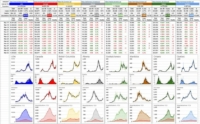
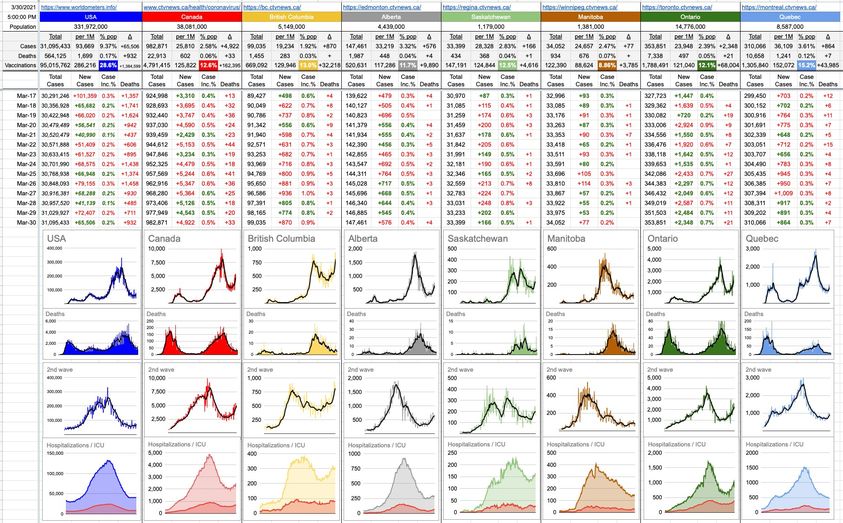
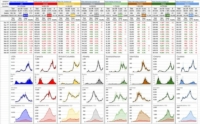
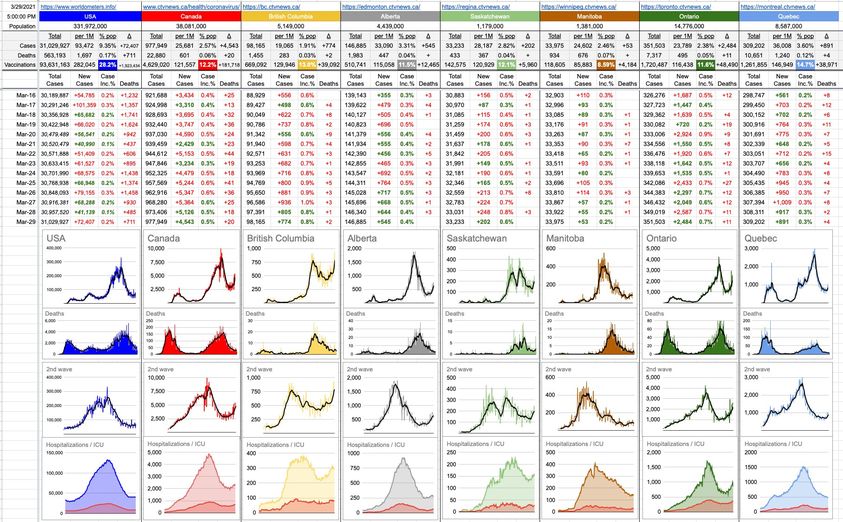
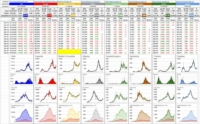

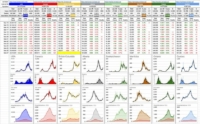

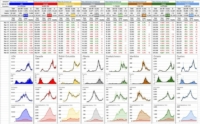
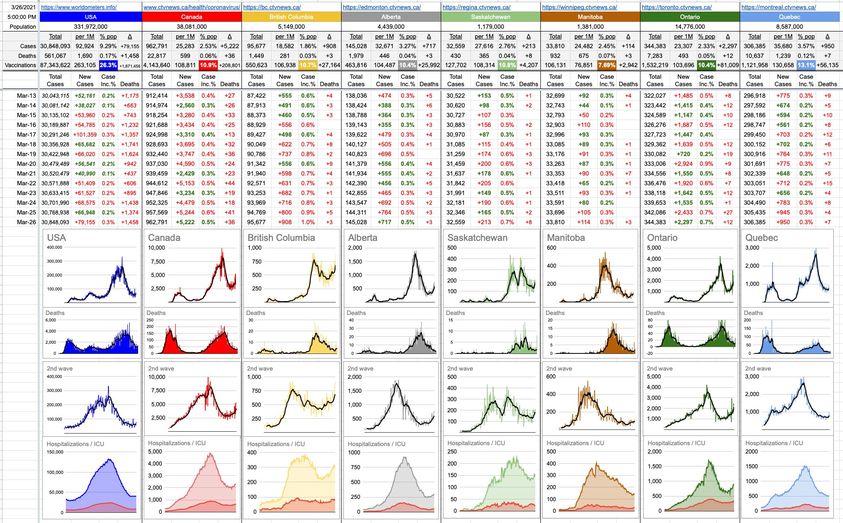
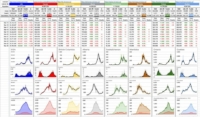
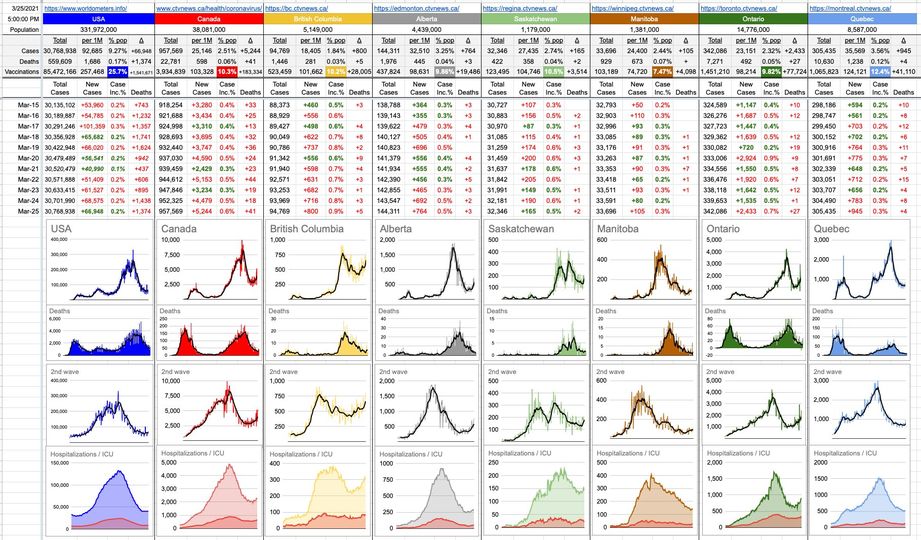
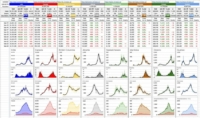
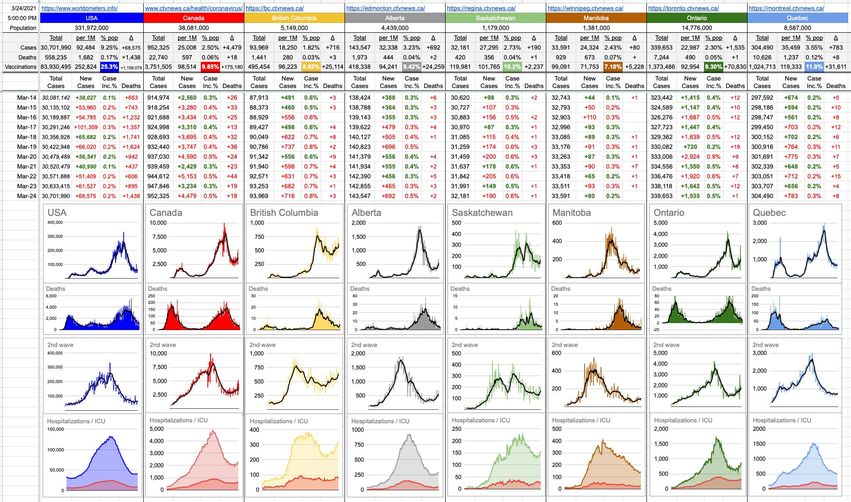
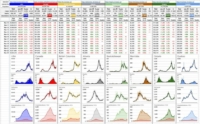
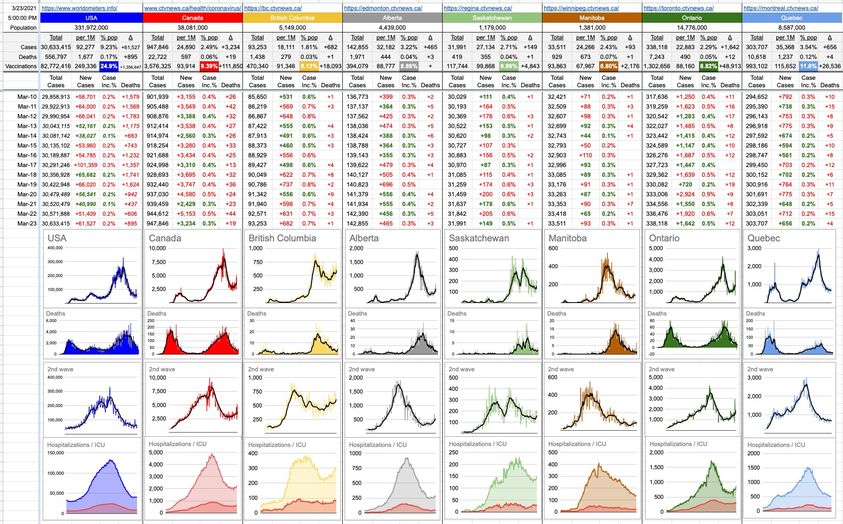
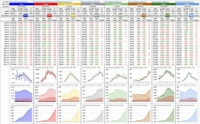

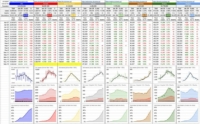
 … [Continue Reading]
… [Continue Reading]